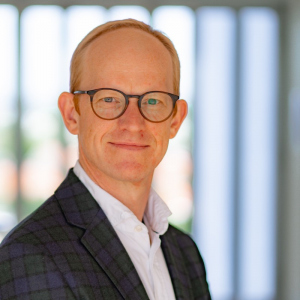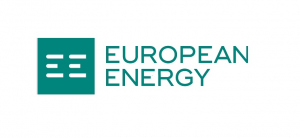| As part of our latest Expert Interview, we spoke with Thorvald Spanggaard, Executive Vice President Head of Project Development, European Energy – about green energy transition and developments in the Nordics and Baltics.
Read on to discover more about European Energy landmark commercial e-methanol plant built in Denmark as well as opportunities and challenges in the green hydrogen and offshore energy that is on the cusp of substantial growth. |
 |
Q: European Energy aims to be a major global force in driving the green transition. How do you pivot from ambition to actions and delivery?
European Energy is a rapidly growing company within the renewable energy sector. Founded in Denmark in 2004 with an engineering background, we now consist of around 700 employees being present in 21 countries.
We envision to be a major global force in driving the green transition and aim to do so by screening, developing, building, and operating renewable energy projects. We develop new technologies within solar and wind energy, both onshore and offshore, as well as storage and e-fuels. Since 2004 we have installed more than 3 GW of RES projects, having in 2023 a construction pipeline of around 1 GW and a development pipeline of more than 65 GW worldwide. This means that we have a highly diversified development pipeline across technologies and countries. Our diverse pipeline also makes us value innovative solutions such as hybrid energy parks or our internally developed AgriPV solutions, where we and agriculture with energy production at our solar parks.
We have also made strides within Power-to-X, in particular e-fuels. Our innovative work with converting renewable electricity into green hydrogen and e-methanol has resulted in the construction of what will be the world’s biggest e-methanol facility in Kassø, Denmark. The plant began construction in 2023 and its electricity will be supplied by the largest solar park in Northern Europe which we also developed and built. Our Power-to-X projects will produce fuel for containerships, heavy transport, plastic production and more.
We believe that our efforts help offset many of the issues the world is facing today, such as the global energy crisis and global warming, while at the same time considering other important, environmental issues such as the biodiversity crisis in a sustainable way.
This means that we are on the journey of transitioning from being a power company to an energy company, where we no longer only focus our efforts on producing and delivering electricity to the grid, but are expanding our portfolio with many different sources of energy, for the betterment of the world.
Q: You are already involved in offshore energy industries in all Baltic countries. What is your outlook for the market? What are your plans for expanding your offshore projects in specific countries?
In 2012 European Energy started to look into offshore wind. By 2018 European Energy took the first major step into offshore wind energy by acquiring the Sprogø offshore wind farm in Denmark (21 MW).
Since that time we are proud of our development pipeline with the 500 MW offshore wind in mature development and around 8 GW of early developments as well as participating in tenders pipeline in markets we focus on, covering Baltics and Nordics.
This year, we established a partnership between European Energy and Vårgrønn to develop offshore in the Baltics.
Q: Currently, what are the main challenges to the development of offshore wind?
Offshore is an integral part of an overall renewables mix for the country especially when thinking about 100% renewable electricity by 2030. Estonia has high offshore wind potential i.e. marine spatial plan has identified areas for offshore wind farms’ development for more than 10 GW, which is much more than Estonia needs for it’s own consumption. Therefore, having in mind that Estonia and Baltics in general has relatively shallow PPA market, Estonia needs to communicate firmly concrete plans for energy interconnectors with other countries which would enable Estonia to export surplus energy.
Apart from that, it is very important to ensure a level playing field in future CfD auctions having in mind the shallow local PPA market. If a tender to be made technology neutral, all market participants to be eligible to compete as there are some offshore projects more advanced than others.
However, the offshore supply chain needs to scale-up to match the new generation of turbines. At the same time, developers need to stay attentive to the high-cost, high interest rate environment we seem to be in, right now.
Q: Green hydrogen/P2X has a crucial role to play in decarbonising industries. What major projects are you working on right now? How do you plan to expand your footprint in the Baltics and Nordics?
From 2024 European Energy will utilize electricity from its 300 MW Kassø solar park, the largest solar farm in Northen Europe, to produce green hydrogen and e-methanol through the so-called Power-to-X process, at its world’s largest e-methanol plant. This initiative offers significant decarbonization potential for heavy emitters. Moreover, surplus heat from hydrogen production will support district heating, providing warmth for over 2,000 households in the vicinity. For e-methanol production, European Energy will use captured biogenic CO2. Whole e-methanol now is contracted. Besides that, European Energy is finalizing the hydrogen production plant powered by its wind park Maade.
Recently, in the national Power-to-X tender in Denmark, European Energy won with all three bids submitted by the company. One of the winning projects will be one of the world’s largest e-fuels facilities with an electrolyzer capacity of minimum 150MW, three times larger than the existing Kassø facility, located not far in Padborg in Aabenraa municipality. Additionally, European Energy won bids for two other projects. One being a second phase of the company’s green hydrogen project in Maade, close to Esbjerg, and the other being an expansion of the e-methanol facility in Kassø. This will add 9MW and 10MW of capacity to the projects for a total of 12 MW and 60 MW, respectively.
European Energy has created a supply chain using biogenic CO2 and renewable energy sources to forge an integrated e-fuel supply chain. With this tender, European Energy is set to scale their expertise and consolidate their position in the field.
European Energy is pursuing opportunities for the development of PtX facilities in many other markets in which it operates, including Baltics, the USA, Brazil, Australia. This is part of the company’s ambition to build PtX facilities worldwide that produce green hydrogen and e-methanol, or so-called e-fuels, using renewable energy.
Q: What is the single most important change to take place in energy markets for the energy transition to be successful?
European Energy implemented and continues to implement innovative and ambition renewable energy projects without any state subsidies. But for us the most important is that national policy development at the very high level is backed by the necessary investments in grid infrastructure (including across borders), a well-functioning and liquid power market and the issue of permits for feasible RES projects. This will give a clear signal to investors like us, that country is ready for the green transition, having its targets in reaching the reduction of the CO2 emissions and national economy decarbonization, energy supply diversification and security. Here meaning not only good governance, but also the communication and promotion of green transition, specifically renewable energy and energy efficiency on all national levels, raising awareness of citizens, civil society organizations, opinion leaders about the importance of such a green transition.
And as a summary, developing, constructing, and operationalizing offshore and other renewable energy projects take time, so a gap can emerge between the demand of the green electricity and the actual provision. However, establishing mutually beneficial collaboration with local communities, having more grid connection options, encountering fewer policy barriers, streamlining permitting processes, and ensuring available financing can accelerate the construction of new clean energy generation capacities from renewable sources , and make green transition more realistic and faster.
More details you will be able to learn during the Baltic and Nordic Energy Summit, where Thorvald Spanggaard will make a keynote speech about European Energy insights on latest offshore and power-to-x projects, and European Energy representatives will participate at panel discussions during the first day of the conference.
Event details: Event: Baltic & Nordic Energy Summit 2023
Date: 28-29 November 2023, Swissotel Tallinn
Find out more: www.eelevents.co.uk/upcoming-events/baltic-and-nordic-energy-summit-2023/

Since 2004 European Energy installed more than 3 GW of RES projects, during 2022 we successfully invested around 800 mln EUR, while in 2023 more than 1 GW are in the construction pipeline and another more than 60 GW are under development in 28 countries. European Energy covers the full cycle of onshore/offshore wind and solar energy production as development, construction, power sale, asset management, as well as Power-to-X technologies (green hydrogen and green e-methanol, green heating production). In 2024 European Energy plans to start the production of e-methanol at its the world’s largest e-methanol plant.
More information about European Energy globally you may find in our Annual book about European Energy and website www.europeanenergy.com

